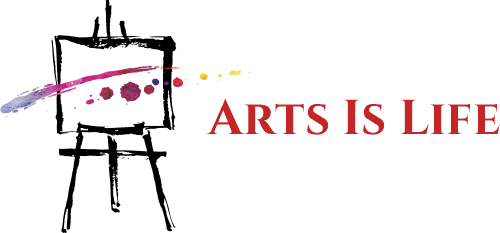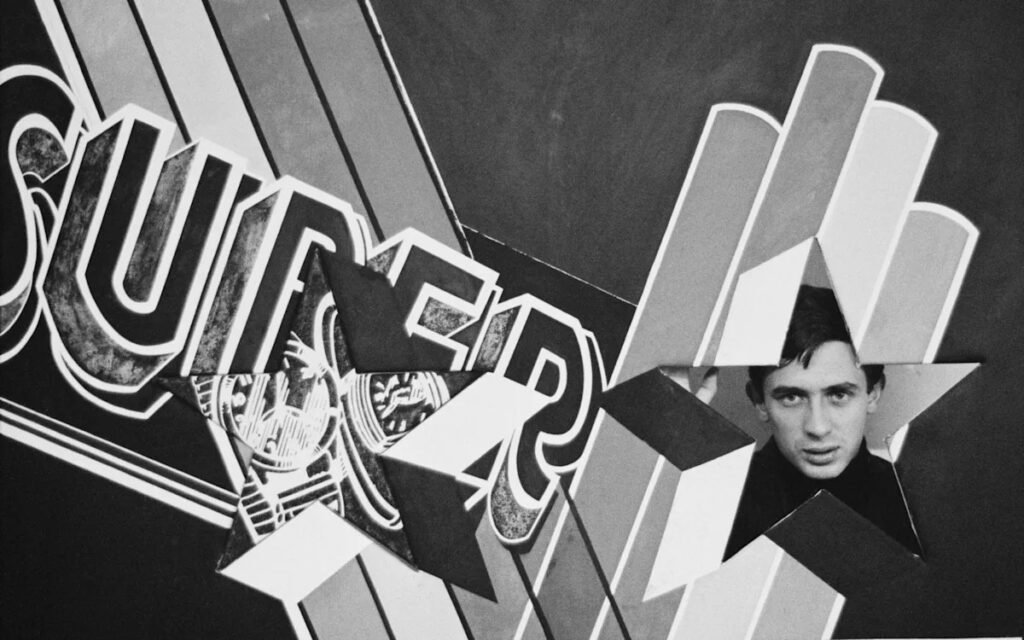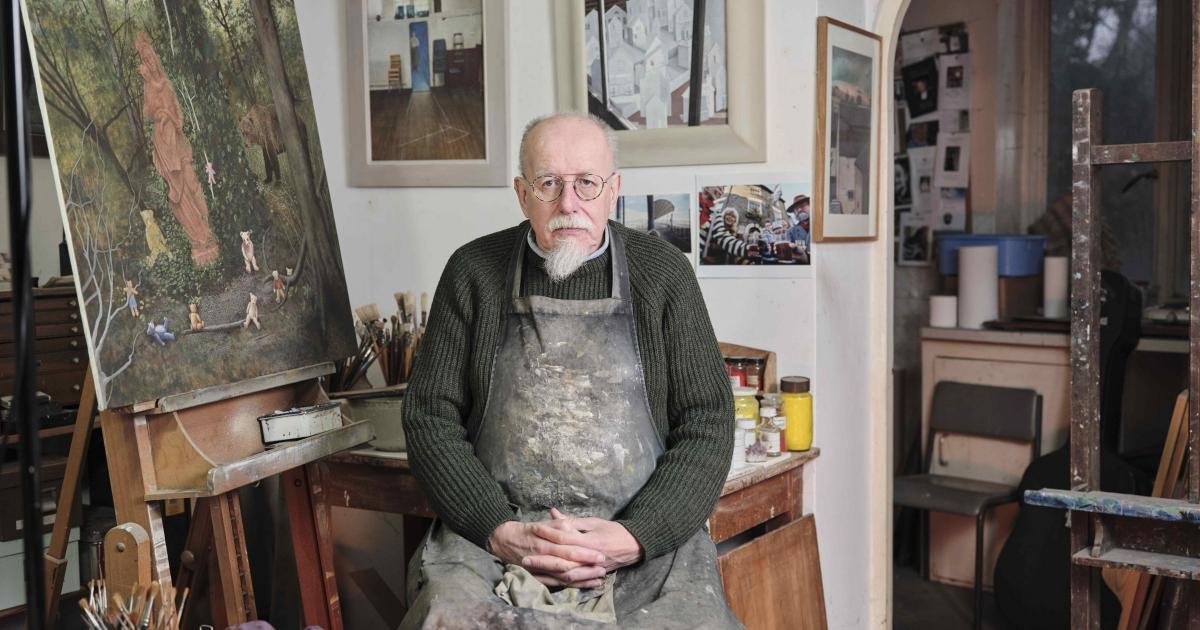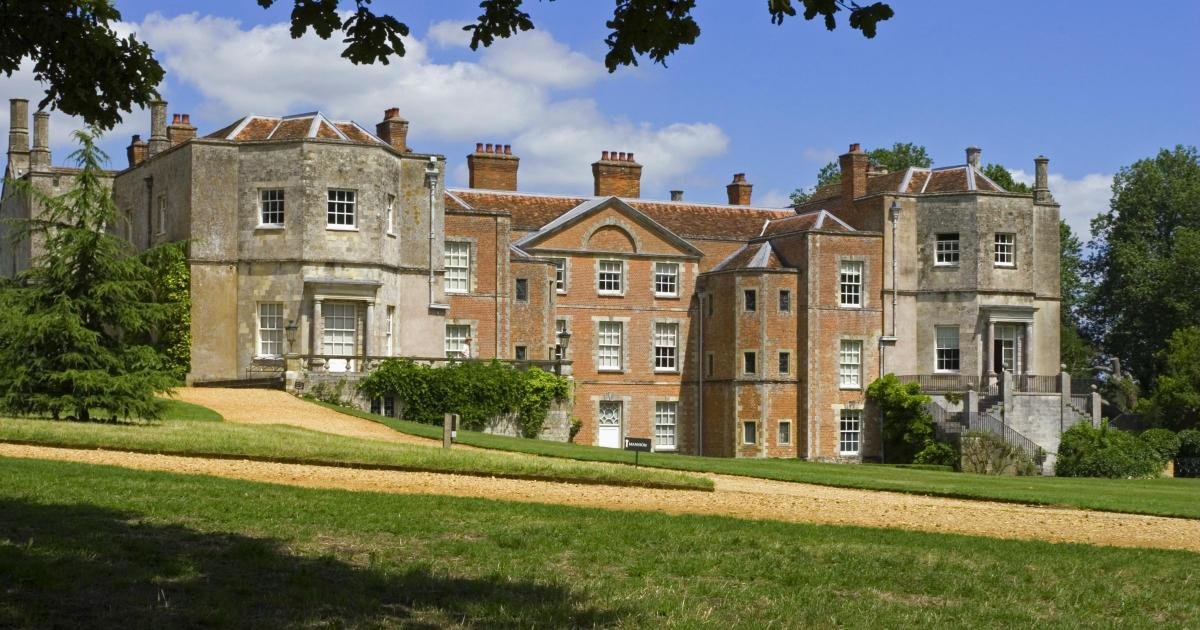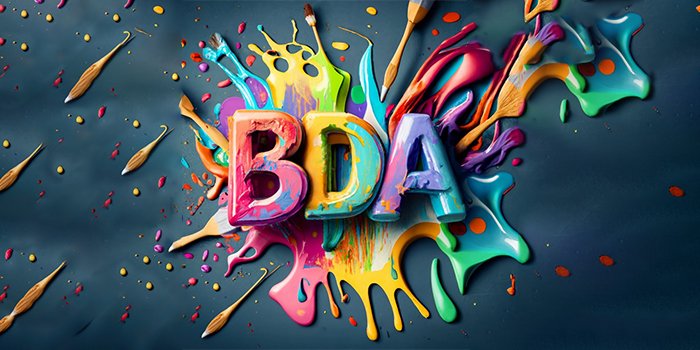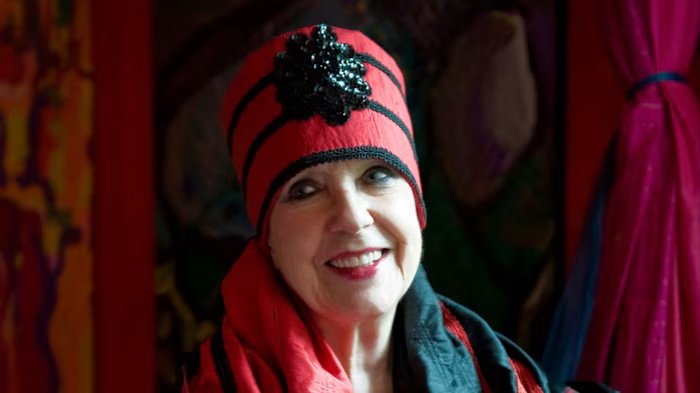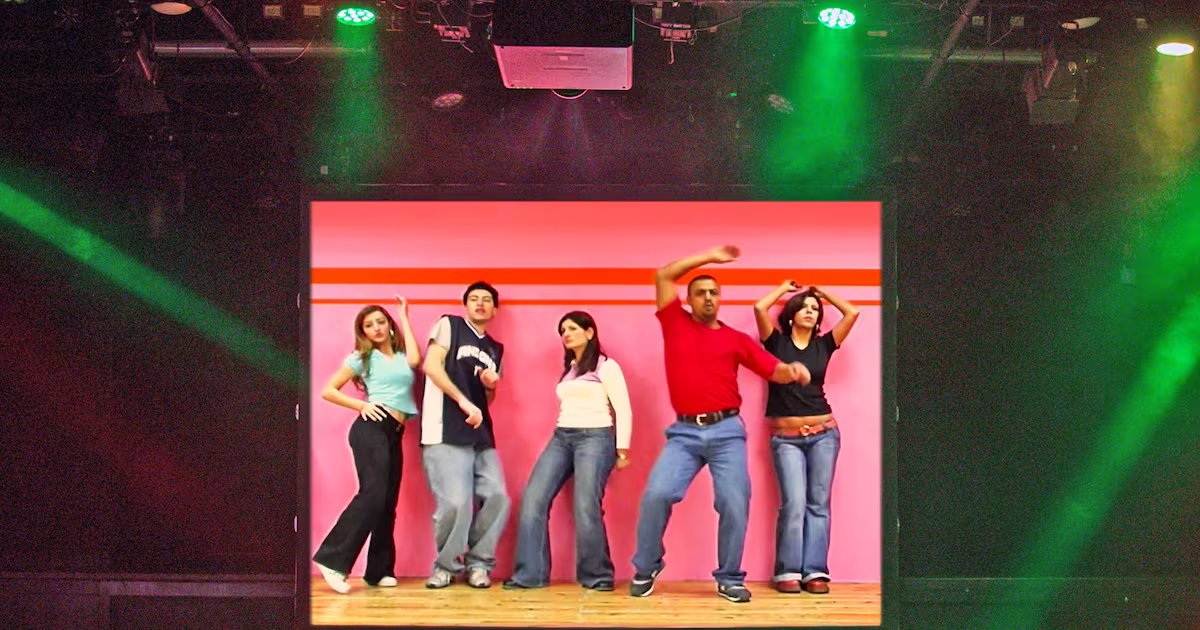Peter Phillips, who has died aged 86, was a pioneer of Pop art in Britain; of all his peers, he emerged as “the most straightforward and most uncomplicated in his response of sheer delight in the brash vigour and vitality of popular products and graphics,” as The Daily Telegraph put it in 1976.
He made his entrance in Ken Russell’s 1962 documentary Pop Goes the Easel in a convertible Cadillac. Things proceeded no less groovily as Phillips was shown hanging out at his Kensington live/work studio, leafing through stacks of schlocky magazines and playing pinball with friends.
The BBC film was an introduction to the world of Pop art through four British artists: Phillips, Peter Blake, Pauline Boty and Derek Boshier. The critic Huw Whelden intones: “Film stars, the twist, science fiction, pop stars. A world you might dismiss as tawdry and second-rate… a world these four artists see as packed with its own mythology.”
As Phillips plays the arcade machine on camera, behind him hangs his painting Entertainment Machine (1960). Now in the Tate collection, it depicts the mechanical parts of the pinball table alongside a piano keyboard, a monster’s head, a pistol and a diagram of various bullets of differing sizes.

Custom Painting 5, 1965 – Phillips Gallery/Peter Phillips
Movies stars, cars and card games were recurring motifs in Phillips’s often bizarre painted combinations: Marilyn Monroe and Brigitte Bardot feature in the vast oil and collage on canvas For Men Only – Starring MM and BB (1960); in AutoKUSTOMotive (1964) a convertible speeds through a stylised rainbow.
Critics were wrongfooted: in 1962 The Daily Telegraph thundered that Phillips’s work was “at worst merely puerile and at best supposed to be bridging the gap between the art of the galleries and the everyday ‘art’ of the hoardings and the underground posters. It fails.”
Rarely did he produce a painting in the 1960s that did not include clubs, spades, hearts or diamonds. His paintings defied any sense of narrative or realism, but reflected on the growing cultural influence of the US, mass commercialism and celebrity culture. Phillips refused to elaborate: “I was on a different frequency then.”
In 1965 Phillips and his fellow artist Gerald Laing formed Hybrid Enterprises, a faux market research vehicle which they hoped would create the “ideal art object”, sending out 137 “research kits” – colour wheels and material samples – to “art literates”.
The consensus-led final product, made in 1966, was a sleek candy-coloured striped aluminium sculpture with neon tubing. It caused critical fury. “The art scene is sick and Hybrid is the clearest symptom of that sickness,” wrote the critic Gene Swenson.

Art-O-Matic Riding High, 1973-74 – Phillips Gallery/Peter Phillips
Peter Phillips was born on May 21 1939 in Birmingham to Reginald, a carpenter, and Marjorie, a clerk at the Cadbury chocolate factory.
Aged 12 Peter attended Moseley Road Secondary School of Art, which offered three-year courses to children who had not passed the 11-plus; he went on to Birmingham College of Art in 1955.
The figurative painting Phillips learned from Gilbert Mason and Bernard Fleetwood-Walker stood him in good stead when he came to paint pin-up girls in his later work.
In 1959 Phillips was accepted into the Royal College of Art and found himself sharing studios with David Hockney, RB Kitaj, Allen Jones and Patrick Caulfield, and immersed in the Swinging London scene.

Phillips in 1972
“When I was young, the only way to make a living as an English artist was to either teach or to secure the patronage of a wealthy aristocrat,” Phillips recalled. “They wanted traditional paintings – landscapes, nudes, still life. That’s what we were taught at the Royal College of Art. But London in the late 1950s was changing… We never called it ‘Pop art’. We were just trying to express who we were.”
His career gained further traction through a series of generation-defining shows in the capital, including Young Contemporaries at the RBA Galleries in 1962, alongside Hockney and Jones, and The New Realists at Sidney Janis Gallery the same year.
Corporations were interested in this vision of youthful modernity, and in 1963 BP commissioned Phillips to produce a series of print adverts for Punch. In 1964 he was part of New Generation at the Whitechapel Gallery and introduced the trend to Europe with Nieuwe Realisten in The Hague, which toured to Vienna and Berlin.
Images of Americana filled Phillips’s canvases, and in 1964 he made a pilgrimage, embarking on a road trip across the USA in a “big Chevy” with Allen Jones; he spent two further years in the US on a Harkness Fellowship. In New York he exhibited alongside Andy Warhol, Roy Lichtenstein and James Rosenquist, and in 1965 he opened his first solo show, at the Kornblee Gallery in New York.

Gravy for the Navy Again, 1972 – Peter Phillips/Phillips Gallery
More European exhibitions followed for Phillips, first in Zurich in 1967 and an early retrospective in Munster in 1971. In 1976 Tate London showed his print works. Mixing lithography with screen printing, Phillips was streamlining his motifs to imagery of the mechanical age: pristine bolts, springs, cogs and shiny car engine parts proliferated in the work. His Art-O-Matic Loop-di-Loop featured on the cover of the 1984 Cars album Heartbeat City.
In 1982 he had a solo exhibition at Fruitmarket in Edinburgh which travelled to the Southampton Art Gallery and the Barbican Art Gallery in London. Phillips moved into sculpture, creating messy wall-hung pyres of painted wooden elements on which nested magazine imagery of snakes and shells.
“I had a profound fear of snakes, and thought if I painted one in detail, it would help. It didn’t help,” he recalled. He also tried to exorcise his childhood memories of the blitz by painting a burning house. “That didn’t help either.”
His work in the following decade took influence from art styles prior to Pop. “I was lucky enough to find success as an artist at a young age. Once I realised I had enough money to survive, I could paint what interested me and not what others wanted from me.”

REwind, 2002 – Phillips Gallery/Peter Phillips
Poses (1991), featuring elements of textile and an image of a dissected lime, owes something to surrealism, while works such as Probe (1997) and The Invisible Man (1998) overlays a flatly painted Mondrian-style grid with photographs culled from magazines.
Phillips remained prolific in his final decades, experimenting with wax on canvas and digital prints. In 2020 he revisited Hybrid, exhibiting in London a second version of the “consumer-determined, taste-catalysed, collector-compatible work”.
Peter Phillips, who lived at various times in Majorca, Costa Rica, Switzerland and Australia, is survived by two daughters, one from his second marriage, to Marion-Claude Xylander, who died in 2003, and one from his first marriage, to Dinah Donald.
Peter Phillips, born May 21 1939, died June 23 2025
